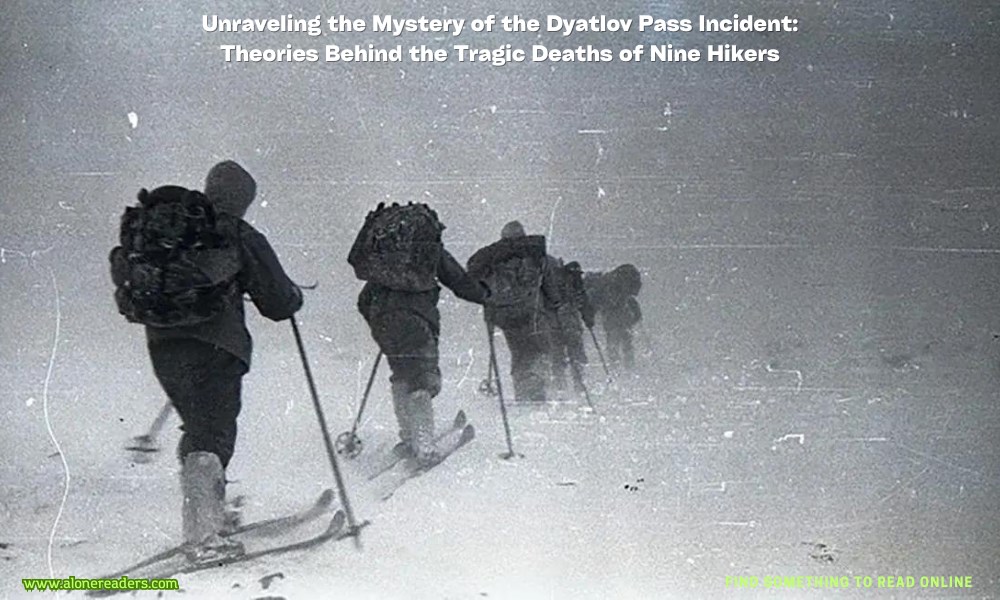
In the bleak expanse of the Ural Mountains during the cold winter of 1959, a mysterious and tragic event unfolded that would puzzle historians, scientists, and enthusiasts for decades. Known as the Dyatlov Pass Incident, this event refers to the unexplained deaths of nine hikers led by Igor Dyatlov, a tale that weaves together elements of mystery, horror, and intrigue.
The group, composed of experienced trekkers from the Ural Polytechnical Institute, embarked on a skiing expedition destined for Otorten Mountain but never completed their journey. Their abandoned campsite, discovered on February 26, 1959, by a search team, presented a harrowing scene: the tent was slashed open from the inside, and belongings including shoes and clothing were left behind in the snow.
The bodies of the hikers were found scattered around the campsite over the next few months. The initial examination concluded that six had died from hypothermia while the remaining three showed signs of physical trauma such as fractured skulls, chest injuries, and one hiker, Lyudmila Dubinina, had severe facial injuries including missing eyes and a missing tongue. This grim discovery only deepened the mystery, as there was no sign of a struggle or any other individuals' footprints.
Theories about what happened to the Dyatlov group range from the plausible to the bizarre. Some suggest an avalanche might have forced them to cut their way out of their tent in a panic, only to succumb to the harsh elements. This theory aligns with the evidence of heavy snowfall and the severe injuries compatible with an avalanche. However, skeptics point out that the tent’s location was not conducive to typical avalanche activity, and the pattern of the injuries did not wholly support this hypothesis.
Another theory posits that infrasound, caused by a particular wind pattern around the mountain, might have induced panic among the hikers, driving them to flee the tent in a state of irrational fear. Infrasound, a low-frequency sound that can cause feelings of unease and discomfort, is suggested to have led them into the lethal conditions outside their shelter.
Military testing in the area has also been speculated as a cause, with some suggesting that the hikers unexpectedly found themselves in the path of a Soviet missile test. Proponents of this theory cite reports of glowing orbs seen in the sky in northern Russia during the period, possibly related to military activities. This could explain the severe injuries found on some of the bodies, which a simple avalanche would not.
Adding to the complexity are theories involving indigenous Mansi tribesmen, who might have had motives to attack the hikers for encroaching on their sacred lands. Yet, the absence of additional footprints or signs of a struggle largely debunks this theory.
In recent years, the paranormal has also been offered as an explanation, with various supernatural claims including yeti attacks and alien encounters. These explanations, while sensational, lack substantial evidence but continue to fuel the allure of the mystery surrounding the Dyatlov Pass.
Despite numerous investigations and re-investigations, including a 2019 inquiry that concluded an avalanche had indeed killed the group, doubts and debates persist. The Russian government's reopening of the investigation in 2019 indicates the continued fascination and unresolved nature of the case.
What remains undeniable is the tragedy that befell these nine young adventurers. Whether the cause was natural, human, or something entirely unexplainable, the Dyatlov Pass Incident remains a somber reminder of the formidable power of nature and the limits of human understanding. As technology and research methods evolve, perhaps new evidence will eventually bring closure to this chilling enigma. Until then, the mystery of what happened on that fateful night in 1959 continues to haunt the snowy expanses of the Ural Mountains.